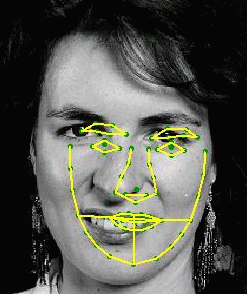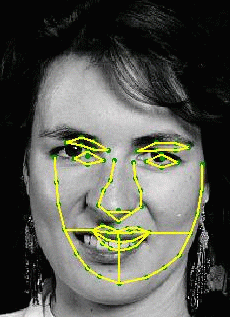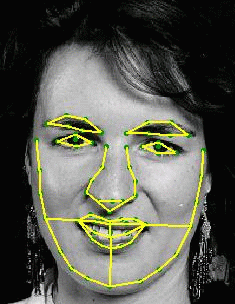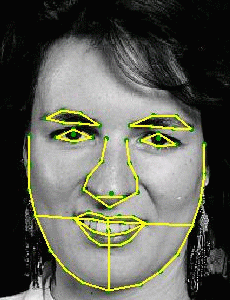 |
An AAM contains a statistical model of the shape and grey-level appearance of the object of interest which can generalise to almost any valid example. Matching to an image involves finding model parameters which minimise the difference between the image and a synthesised model example, projected into the image. The potentially large number of parameters makes this a difficult problem.
We observe that displacing each model parameter from the correct value induces a particular pattern in the residuals. In a training phase, the AAM learns a linear model of the relationship between parameter displacements and the induced residuals. During search it measures the residuals and uses this model to correct the current parameters, leading to a better fit. A good overall match is obtained in a few iterations, even from poor starting estimates.
We have a face model built from 400 images. The figure below shows frames from an AAM search for a new face, each starting with the mean model displaced from the true face centre.
 |
 |
 |
 |
| Initial Position | After 1 iteration | After 2 iterations | Convergence |
You can now download a set of tools to build and play with Appearance Models and AAMs here. Enjoy.
Tim Cootes